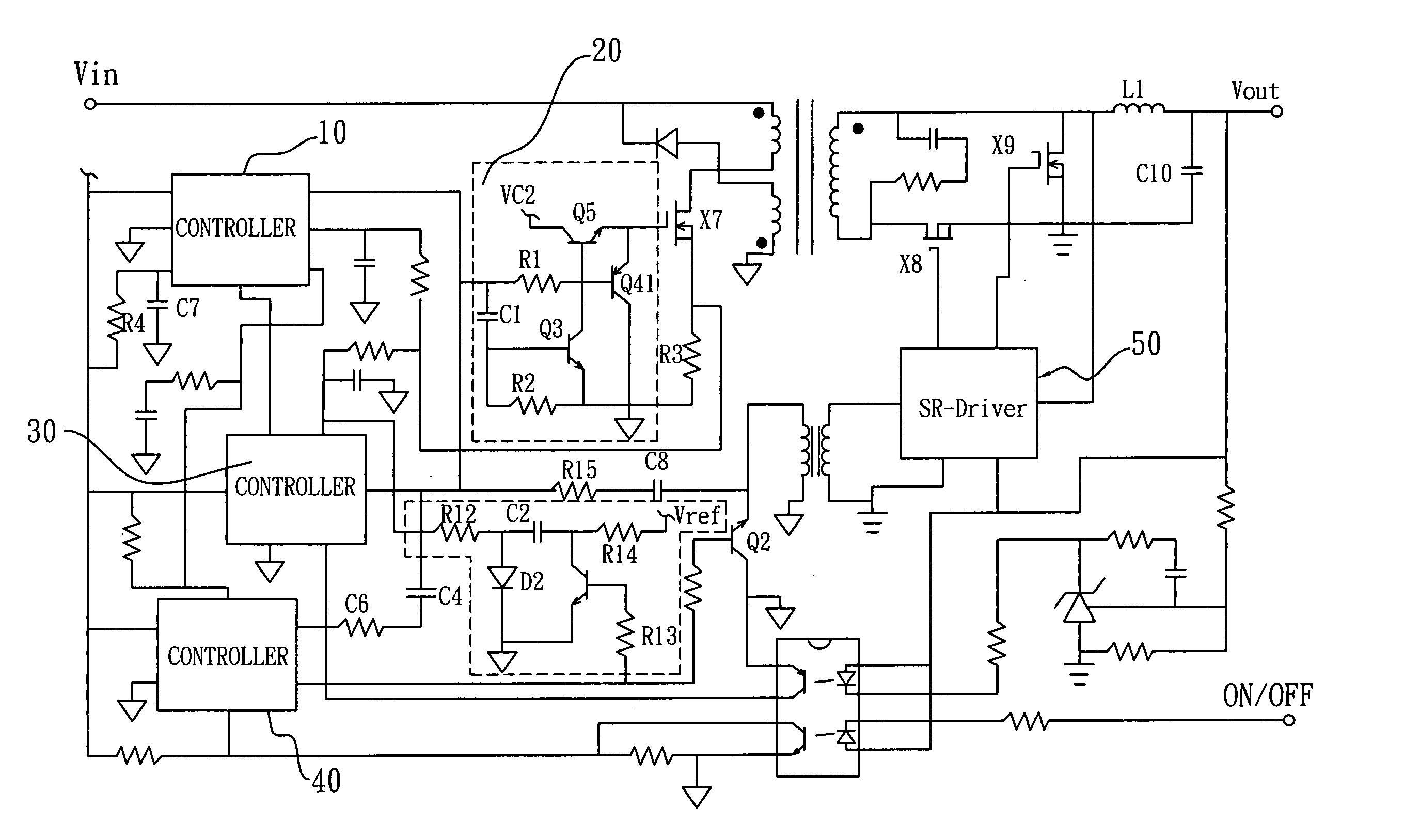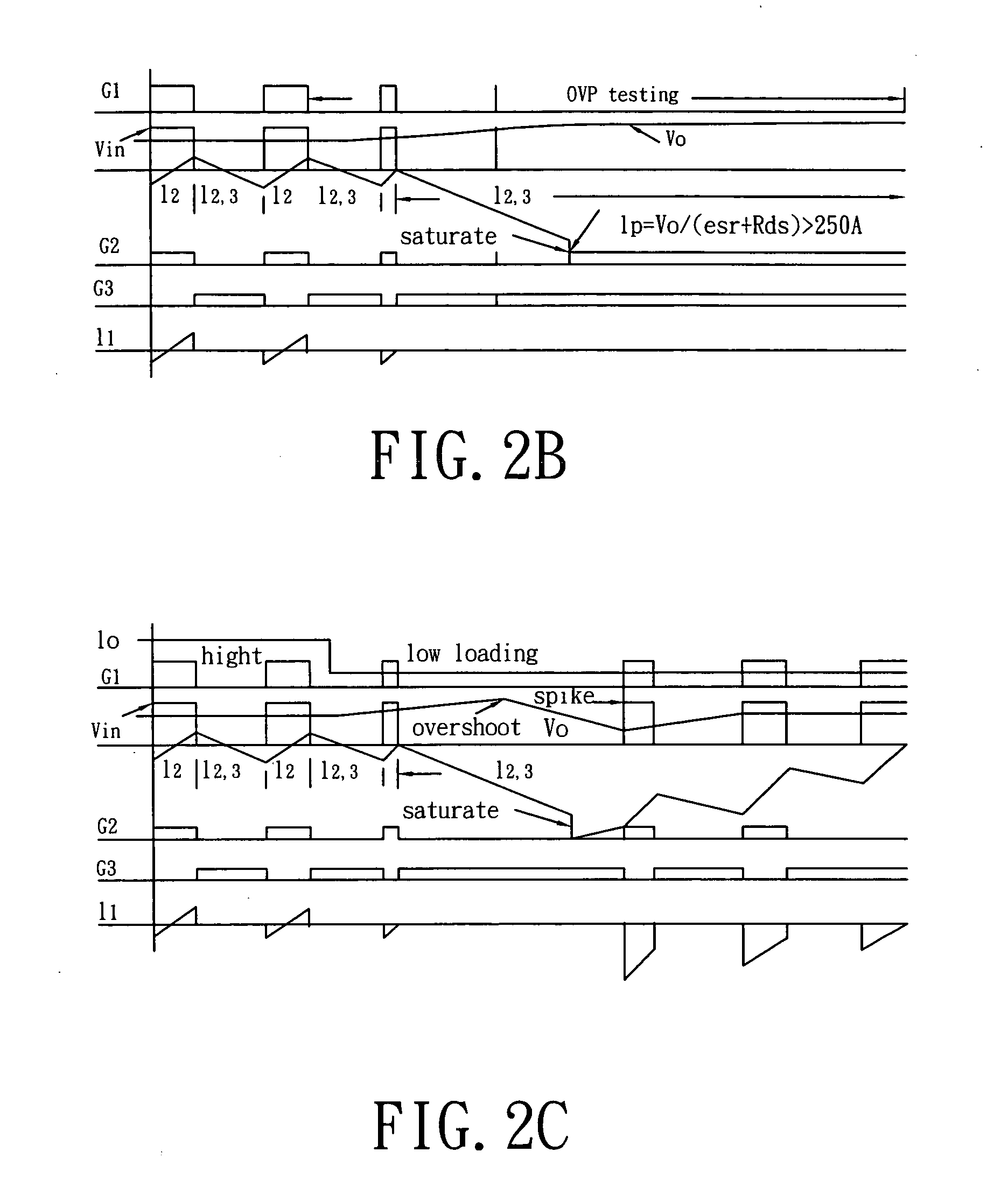Forward converter with synchronous rectifier and reverse current control
a reverse current control and forward converter technology, applied in the field of circuit controllers, can solve the problems of power efficiency, high conducting loss, and the possibility of mosfet burning down the reverse current in the circuit entirely, and achieve the effect of high conducting loss, power efficiency, and high efficiency
- Summary
- Abstract
- Description
- Claims
- Application Information
AI Technical Summary
Benefits of technology
Problems solved by technology
Method used
Image
Examples
Embodiment Construction
[0033] Referring to FIG. 3 of the drawings, a circuit diagram of a forward converter using a synchronous rectifier control circuit is illustrated, in which the forward converter comprises a Synchronous Rectifier (SR) control circuit comprising a PWM controller 10, a delay controller 20, a Synchronous Rectifier (SR) continue conduction mode (CCM) controller 30, a SR-on-off controller 40, and a SR driver 50.
[0034] The PWM controller 10 is used to generate driver signals for the main MOSFET, X7, and the SR circuit. The delay controller 20 is used to delay the driver signals in order to prevent the overlap between main MOSFET X7 and SR MOSFET, X8, X9. The SR-CCM controller 30 is used to control the reverse current of L1 via extending the duty cycle approach. The SR-on-off controller 40 is used to have the SR control circuit to manage the turning-off sequence. The SR-driver 50 is used to regenerate a clock signal and strengthen the driver capability. Moreover, others circuits basically ...
PUM
 Login to View More
Login to View More Abstract
Description
Claims
Application Information
 Login to View More
Login to View More - R&D
- Intellectual Property
- Life Sciences
- Materials
- Tech Scout
- Unparalleled Data Quality
- Higher Quality Content
- 60% Fewer Hallucinations
Browse by: Latest US Patents, China's latest patents, Technical Efficacy Thesaurus, Application Domain, Technology Topic, Popular Technical Reports.
© 2025 PatSnap. All rights reserved.Legal|Privacy policy|Modern Slavery Act Transparency Statement|Sitemap|About US| Contact US: help@patsnap.com



